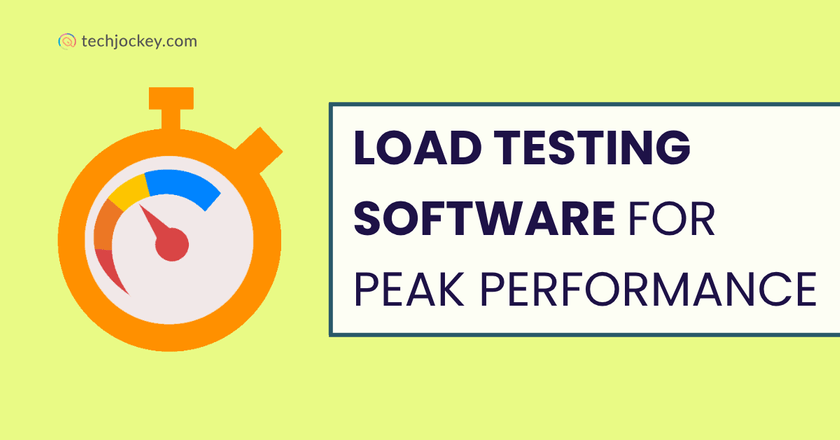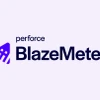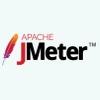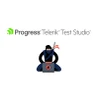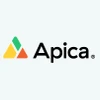Everyone is running with this quick-moving tech world. Users expect websites and apps to respond instantly. It has been found that even a 1-second delay can cut conversions by 7% which is how high the stakes are. If your app struggles under traffic spikes, you’re not just risking slow load times; you’re risking revenue.
That’s where load testing tools comes in. They help you simulate real-world usage, spot bottlenecks, and make sure your app stays fast and reliable.
In this blog, we’ll cover 8 of the best load testing tools developers and companies rely on, from open-source picks like JMeter and Gatling to enterprise-grade solutions like NeoLoad software and more.
What is Load Testing?
In terms of software engineering, Load Testing is a form of performance testing that involves determining the behavior of a system under a certain expected workload.
To put it simply, it is a simulation of real-life scenarios where several users use the same application at the same time to evaluate how responsive, stable, and resource-consuming the application is.
As opposed to stress testing, which pushes the system to the limits where it breaks, load testing remains within the realistic traffic levels in order to pinpoint any possible problems in managing the daily use
It helps answer questions like:
- How will the website perform with 1,000 users when they are all shopping simultaneously?
- Is the API able to support 10,000 requests in a minute?
- What is the memory consumption/CPU consumption by the app when it is in use?
Example:
You can picture yourself opening a holiday sale in your e-commerce app. Load testing is essential to support any unexpected peak in traffic that would bring your checkout page down. No testing could also lead to impossible payments, resulting in extra money loss and a frustrated user. Load testing helps you be ready and avoid such a disaster.
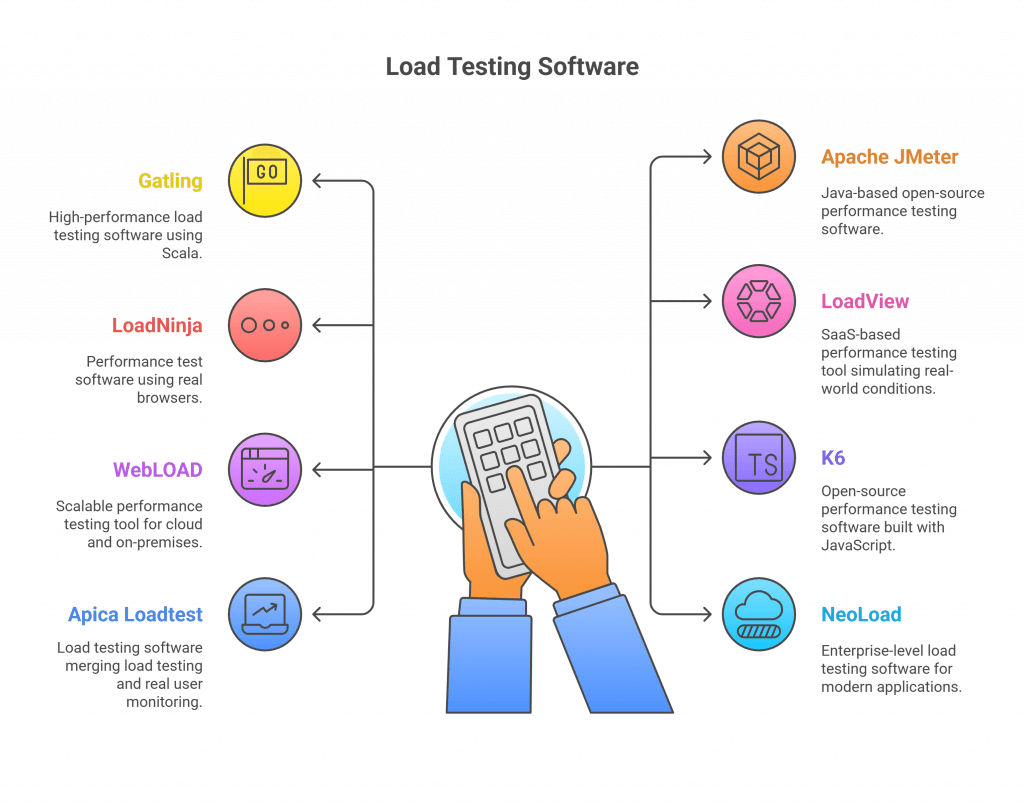
Why Use Load Testing a Software?
Manual load testing is neither practical nor scalable. This is why strong load testing tools and performance testing tools are used by developers to automate the process and get valid performance data.
Here’s why using the right performance testing software is essential:
- Simulates Real-World Scenarios: The modern tools simulate the behavior of hundreds or thousands of users who have access to your app or site. This gives a realistic picture of peak performance.
- Detects Bottlenecks Early: Using a load testing tools , you can detect slow APIs, memory leaks, or database problems, long before end users are affected.
- Improves Scalability: The load testing assists the teams in knowing whether the application infrastructure is scalable. Otherwise, it proposes the areas of optimization: code, server setup, or database queries.
- Automates and Integrates: A lot of sophisticated tools are coupled with CI/CD pipelines, which permit automated load tests with each release. This facilitates constant monitoring of performance.
- Supports Decision Making: Through the metrics of load threshold, teams can make informed decisions regarding server provisioning, third-party integrations, and code enhancement.
Top 8 Load Testing Tools Comparison
Explore the key features, pros, cons, and pricing of the best load testing software to help you choose the right solution for your performance needs.
| Tool | Best For | Pros | Cons | Pricing |
|---|---|---|---|---|
| Gatling | Scalable open-source load testing | Fast, detailed reports, CI/CD ready | Needs Scala, steep learning curve | From €99/mo, Enterprise custom |
| Apache JMeter | Free performance & protocol testing | Open-source, flexible, cross-platform | Complex UI, no real-browser testing | Free |
| LoadNinja | QA teams needing scriptless tests | No coding, real browser-based testing | Paid only, limited protocol support | From $350/25 hrs |
| LoadView | SaaS-based app & API testing | Video debugging, easy integrations | Costly, slow to start | From $129/mo |
| WebLOAD | Enterprise-grade performance testing | Powerful scripting, real-time analytics | Needs coding, limited UI testing | From $499/mo |
| K6 | Dev-friendly open-source testing | Lightweight, CI/CD integration | No GUI, limited browser testing | Free, Pro $19/mo |
| Apica Loadtest | Cloud, API & monitoring insights | AI-driven insights, global simulation | Custom pricing, slight learning curve | Custom pricing |
| NeoLoad | Enterprise DevOps & CI/CD testing | Browser + protocol, APM integrations | Steep learning curve, heavy system use | Custom pricing |
Tools to Test and Scale with Confidence
Whether you prefer open-source solutions or enterprise-grade solutions, you can use these to test, scale, and win when it matters. Let’s start:
1. Gatling
Gatling is an effective, high-performance load testing open-source software. It uses Scala and an asynchronous architecture to simulate thousands of users with minimal resource usage.
Key Features of Gatling:
- Human-readable domain-specific scripting language (DSL)
- Supports HTTP, WebSocket, JMS, and more
- Generates HTML reports with detailed metrics
- Works cross-platform via JVM
- Integration with Jenkins and CI/CD tools
- Modular, reusable test scenarios
- Assertions API for test validation
- Built-in support for real-time monitoring
- Open source with paid enterprise features
- Graphite/Grafana support for visualization

Gatling FrontLine
Starting Price
€ 99.00
Pros
- Efficient and scalable
- Simulates many users on a few threads
- Developer-friendly with version-controlled, code-based tests
- Detailed built-in reporting without extra setup
Cons
- Requires Scala knowledge
- Has a steep learning curve
- High resource usage for large-scale testing setups
Plans and Pricing:
| Plan | Price/Month | Virtual Users (VUs) | Testing Hours |
|---|---|---|---|
| Basic | €99 | Up to 60,000 | 1 hour included |
| Team | €396 | Up to 180,000 | 5 hours included |
| Enterprise | On Request | Custom Limit | Custom Limit |
2. Apache JMeter
Apache JMeter is a Java-based open-source performance testing software that is free. It was originally created with a web application in mind, but is used to support many protocols and perform powerful load, stress, and functional testing of any system.
Key Features of Apache JMeter:
- Custom test scenarios with Groovy or Beanshell support
- Dynamic parameterization for data-driven test execution
- Supports correlation for session handling and tokens
- Advanced assertions for response validation accuracy
- Distributed testing using remote JMeter servers
- Protocol extensibility for non-standard communication types
- Cloud testing with integration to AWS, Azure, etc.
- Cross-platform support for Windows, macOS, and Linux
- Record and playback with drag-and-drop capabilities
- Extensive plugin support and active user community

Apache Jmeter
Starting Price
Price on Request
Pros
- Free and open source
- Highly customizable scripting
- Platform-independent tool
Cons
- Steep learning curve
- Limited real-browser testing
- UI not beginner-friendly
Plans and Pricing: Free and open source with no licensing cost.
3. LoadNinja
LoadNinja is an effective performance test software that employs real browsers to recreate user interactions, hence producing good load testing results. It has scriptless test creation, real-time analysis, and cloud-like elasticity, which suits current QA and DevOps environments.
Key Features of LoadNinja:
- Real browser testing for accurate performance metrics
- Scriptless record-and-replay test creation interface
- Real-time server and UI performance monitoring
- AI-powered element identification and test optimization
- Cloud execution for scalable load simulation
- CI/CD integrations with Jenkins and Azure DevOps
- Browser-based debugging with detailed logs and reports
- Supports single-page apps and dynamic websites
- Multi-location user traffic simulation support
- Data-driven and parameterized test case execution

LoadNinja
Starting Price
$ 301.00
Pros
- No coding required
- Real-world browser-based tests
- Fast cloud execution
Cons
- Not free or open-source
- Limited protocol-level testing
- Pricing varies with usage
Plans and Pricing:
| Plan | Use Case | Price | Includes |
|---|---|---|---|
| Professional | Lighter traffic testing | $350 / 25 hours | 100 virtual users (scalable pricing) |
| Enterprise | Moderate to high traffic | Custom pricing (Let’s chat) | Starts at 25 hours |
4. LoadView
LoadView is a SaaS-based performance testing tool that can simulate different traffic levels to test application responsiveness with real-world conditions. It facilitates the playback of video-based tests, API load tests, and various integrations to have a full and up-to-date testing process.
Key Features of LoadView:
- Simulates global traffic with load injector servers
- Supports real browser testing on desktop and mobile
- Video recording to visualize the user journey and issues
- Tests HTTP/S, APIs, web pages, media, and more
- Integrates with Postman, Selenium, and JMeter
- Multi-variate testing for deeper performance insight
- User-friendly dashboard for real-time monitoring
- Supports SOAP and REST API performance checks
- Flexible testing from various geo-locations
- Seamless integration into existing workflows

Loadview
Starting Price
$ 129.00
Pros
- Video-based debugging
- Supports wide range of targets
- Easy third-party integrations
Cons
- Slow test initialization
- Subscription can be costly
- It may be overwhelming for beginners
Plans and Pricing:
| Plan | Best For | Price | Notes |
|---|---|---|---|
| On-Demand | Single, occasional tests | $0/month | Pay per test run |
| Subscription | Frequent testing needs | Starting at $129/mo | Ideal for agile teams |
| Enterprise | Large-scale or continuous testing | Custom pricing | Scalable for enterprise workloads and teams |
5. WebLOAD
WebLOAD is a capable and scalable performance testing tool that can be both cloud and on-premises-deployed. It helps teams to create realistic real-time traffic and discover application performance problems by using powerful scripting, real-time analytics, and AI-driven insight.
Key Features of WebLOAD:
- Script correlation for dynamic session handling
- Supports JavaScript and Java extensions
- Cloud, on-premises, or hybrid test execution options
- Real-time analytics with a browser-based dashboard
- AI-powered performance optimization insights
- Parameterization to simulate real-world user behavior
- Drag-and-drop script building interface
- Bottleneck detection with detailed system metrics
- WebSocket and HTTP/S protocol support
- ChatGPT integration for dynamic optimization tips

WebLOAD
Starting Price
Price on Request
Pros
- Powerful script correlation engine
- Real-time visual analytics
- Scalable deployment options
Cons
- Advanced scripts need coding
- Limited reactive UI testing
- Sparse community support
Plans and Pricing:
| Plan | Best For | Price | Notes |
|---|---|---|---|
| Monthly | Beginners | $499/month | Up to 500 concurrent virtual users |
| Professional | Professional use | Quote on request | Up to 10,000 concurrent VUs (SaaS or On-Prem) |
| Enterprise | Large-scale teams | Quote on request | Up to 100,000 concurrent VUs (SaaS or On-Prem) |
6. K6
K6 is an open-source performance testing software, targeted at developers and built with JavaScript to produce scalable test scripts. It provides comprehensive metrics, CI/CD integration, and cloud-native compatibility with testing technology-intensive web applications and APIs.
Key Features of K6:
- Write test scripts using JavaScript language
- Lightweight architecture with minimal resource usage
- Detailed performance metrics and reporting
- Cloud-native support for distributed testing
- Seamless CI/CD pipeline integration
- Supports high-scale user load simulations
- Open-source with an active developer community
- Quick feedback during development cycles
- CLI-based execution for automation and scripting
- Works well with modern microservice setups
Pros
- Open-source and affordable
- Easy for developers to adopt
- Excellent CI/CD compatibility
Cons
- No GUI for scripting
- Limited real-browser testing
- Pro plan has usage limits
Plans and Pricing:
| Plan | Best For | Price | Notes |
|---|---|---|---|
| Free | Individuals or teams | Free forever | Community support, basic functionality |
| Pro | Small teams | $19/month | Enhanced features, usage limits apply |
| Advanced | Growing businesses | $299/month | Higher test capacity and support |
| Enterprise | Large organizations | Custom pricing | Full support, SLAs, advanced scaling |
7. Apica Loadtest
Apica LoadTest is a robust and scalable load testing tool to test the web, cloud, and API applications by emulating thousands of virtual users. It merges load testing, real user monitoring (RUM), and proactive issue detection with synthetic monitoring.
Key Features of Apica Loadtest:
- Web-based interface for script creation and editing
- Execute and schedule tests from global locations
- Real-time monitoring of response and error rates
- Customizable reports with visual performance metrics
- Geographic load simulation from multiple regions
- Full API performance testing and validation
- RUM for tracking real user interaction patterns
- Synthetic monitoring with proactive issue detection
- Team collaboration features and centralized reporting
- AI-powered anomaly detection and root cause analysis

Apica Loadtest
Starting Price
Price on Request
Pros
- Real and synthetic monitoring
- Strong API and cloud testing
- AI-driven performance insights
Cons
- Pricing is not transparent
- Slight learning curve for beginners
- UI can feel cluttered
Plans and Pricing: Pricing is customized based on usage volume and organizational needs. Contact Apica for a quote tailored to your requirements.
8. NeoLoad
NeoLoad is a load testing tool designed on an enterprise level with capabilities to test modern applications, including web, mobile, APIs, and microservices. It allows scale performance testing in CI/CD using powerful integrations, browser-based testing, and DevOps automation.
Key Features of NeoLoad:
- Record-and-playback scripting with drag-and-drop tools
- Supports browser- and protocol-based performance testing
- DevOps-ready with CI/CD integrations (Jenkins, Azure, Bamboo)
- RealBrowser tech to simulate actual user interactions
- Simulate WAN/mobile conditions (3G, 4G, WiFi)
- Real-time dashboards for bottleneck detection
- Cloud-based distributed load generation
- Supports HTTP/S, WebSocket, REST, SOAP, and JDBC protocols
- Built-in version control and Git/SVN collaboration
- Integrates with APM tools like Dynatrace and New Relic

Tricentis NeoLoad
Starting Price
Price on Request
Pros
- DevOps and CI/CD ready
- Browser + protocol support
- Excellent APM tool integration
Cons
- Pricing only on request
- High learning curve for beginners
- Heavy system requirements at scale
Plans and Pricing: Pricing is available on request and tailored based on team size, usage scale, and deployment requirements.
Conclusion
The correct load testing tool can be useful to test your apps under pressure. Whether you go for open-source solutions, like JMeter and K6, or enterprise-level ones, such as NeoLoad and LoadNinja, they all have different advantages when tested on different requirements.
No matter what you are testing: APIs, websites, or cloud applications, these top 8 tools assist you in identifying possible bottlenecks early.
Paying for a proper performance test tool will translate to decreased crashes, increased reliability, and satisfied users.
Mehlika Bathla is a passionate content writer who turns complex tech ideas into simple words. For over 4 years in the tech industry, she has crafted helpful content like technical documentation, user guides, UX content, website content, social media copies, and SEO-driven blogs. She is highly skilled in... Read more

